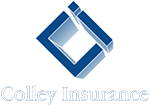
Auto Insurance Options in Canada
Are you shopping around for auto insurance? Is your policy about to expire?
Or you just got your new car and you’re excited to hit the road?
You probably know this, but auto insurance is a legal requirement in Canada (more on this later).
Given that there are so many options to choose from – how do you learn about each, maximize your coverage and save money all at the same time?
In this blog, we discuss just that – the various types of auto insurance coverage and the different forms of protection that are available to you.
At Colley Insurance, we understand that each situation will be different and that is why the coverage and options will vary from plan to plan. You are always welcome to reach out to us directly at customerservice@tgcolley.com
Auto insurance works in the same way as most other types of insurance in Canada. You pay a monthly amount for the coverage of your vehicle in case of any loss your automobile might face.
That said, there are different types of automobile insurance options available in Canada, and not all of them are mandatory.
While most insurance products are similar in price and function, insurance providers vary when it comes to structuring a policy tailored to you.
At Colley Insurance, we provide a wide range of auto insurance solutions. Aside from the standard auto policy– some of the other automobiles we can help you with include:
- Classic car
- Motorcycle
- Powersports
- Recreation Vehicle
You can learn more about them in our Auto Insurance page here.
This article is an overview of options only. The options and details shared are by no means complete and exhaustive.
Types of Car Insurance in Canada
There are optional and required coverage components to auto insurance.
We start with the mandatory coverage requirements and some of the optional components or comprehensive options or benefits you can consider when looking for auto insurance.
As with anything, coverages mentioned below are subject to limits, deductibles and exclusions depending on the policy you go with.
Mandatory Car Insurance in Canada
Take a look at the car insurance types recognized as mandatory by the Canadian Government.
In Ontario specifically, the law requires that all motorists have auto insurance. Your driver’s license can be suspended, and vehicle impounded if you are found driving without valid auto insurance.
Fines can be quite steep and range between $5,000 to $50,000.
1. Third-Party Liability Insurance
This type of insurance also gives you protection to cover expenses related to damage or injuries your vehicle causes to other people (even death).
By law in Ontario, you must carry a minimum of $200,000 in third-party liability coverage. This number is quite old and ready for an update since due to escalating court awards it is becoming common to carry $2,000,000.
The deductible is the amount you pay before insurance kicks in if you have a claim and typically ranges from $500 to $2,500.
Options exist to increase these coverages and the deductible amounts depending on the plan you go with.
While you are legally required to carry a $200,000 minimum Liability limit for auto-insurance, the cost to increase it to $2,000,000 in coverage is usually small.
2. Accident Benefits Coverage (bodily injury)
If you get injured in an accident, this section will provide benefits regardless of if you or someone else is at fault. Some of the medical coverage includes:
- Medical Rehabilitation and Attendant Care Benefit
- Caregiver Benefit
- Housekeeping and Home Maintenance Expenses (Catastrophic Injuries only)
- Income replacement Benefit
- Death and Funeral
3. Collision Coverage and Direct Compensation/Property Damage
Collision insurance covers the cost of repairing or replacing your car if you hit another car or object.
This type of insurance provides you with protection in case of a car accident where you are not at fault.
If someone else is at fault for an accident, Direct Compensation pays for damage to your vehicle, its contents and equipment, and loss of use. It is called direct compensation because even though the third-party was at fault, your insurance provider directly covers the expenses, and you can collect directly from your insurance provider (not the 3rd party).
The insurance company will help you with determining the amount that will cover the cost of repairing your car and any other vehicle (or object), depending on what kind of damages are involved.
4. Uninsured Automobile coverage:
What happens when the person you got into an accident with failed to remain on the scene?
Hit and run? Uninsured motorist?
Even if you are not able to identify the other uninsured driver – this type and section of the auto insurance protects you in these scenarios.
Optional Car Insurance
Optional Car insurance is not made mandatory by the Government.
Still, they serve different benefits and are worth exploring.
1. Income replacement coverage
If you cannot work due to your accident, then the standard insurance coverage will give you up to $400/week or 70% of your gross income.
If this may not be enough to cover your current income levels, you can purchase additional coverage as an income replacement benefit.
2. Other Types of Optional Coverage
There are other optional coverages available if you are looking to maximize your coverage. You can purchase these for an additional premium (that means higher annual or monthly spend for your insurance given the higher coverage provided).
Some of these benefits include:
- Enhanced coverage for Medical Rehabilitation and Attendant Care
- Enhanced caregiver benefits (to also include non-catastrophic injuries)
- Housekeeping & maintenance benefits (to also include non-catastrophic injuries)
- Increased Death & funeral benefits
- Additional dependent care benefits
- Indexation benefits
- Renting a car or alternate transportation when your vehicle is being repaired
- Emergency roadside assistance
- Collision forgiveness (which prevents your premiums from increasing)
Many medical expenses especially physiotherapy and chiropractic treatments are not covered by OHIP.
If you are looking to explore more options on additional coverage available for auto insurance, our team at Colley will be happy to walk you through them and help you decide which ones are best for you.
What is Usually Not Covered in Standard Auto Insurance:
Personal Contents Go Under Home Insurance Typically
Most car insurance policies do not cover the loss of personal contents within the car such as electronics and other personal assets.
These contents are usually covered in your home or tenant insurance instead.
Damages By Elements Not Covered in Standard Insurance
If you haven’t purchased Comprehensive coverage, then damages caused by elements is usually not covered.
By elements, we mean damage caused by weather, falling objects and other such unforeseen events.
Theft and Vandalism
If your car is vandalized or stolen and you only have Third Party Liability insurance, your policy will not respond to protect against this kind of loss.
Comprehensive coverage usually provides this additional protection.
Our recommendation is to read and understand your options well.
What are the Benefits of Having Automobile Insurance in Canada?
Having car insurance can be very valuable as it protects you from loss, minimizes the risk, and ensures your protection from potential financial expenses you might have to incur after a car accident.
Below are some benefits of carrying a good auto insurance policy and understanding your options better:
1. No Major Financial Loss
The primary benefit of having auto insurance is that it protects you from the loss you might have to face if something goes wrong.
It offers protection from accidents, natural calamities, criminal activity, fires, and thefts.
Auto insurance can also provide protection for financial loss (as mentioned in the mandatory and optional coverage sections above).
2. Keeps You Out of Legal Trouble + Saves You Time
If you are driving a car in Ontario, as mentioned – you must carry car insurance for your vehicle.
Besides, without adequate car insurance, in addition to not following the law, you will have to cover the expenses related to the accident (especially with at fault accidents).
Dealing directly with the third party is complex and time consuming and if it’s not done correctly can result in serious legal issues. Reporting your claim to the insurance company allows you to pass this responsibility on to the experts at the insurance company.
Save time and be on the right side of the law!
3. Peace of Mind
Sometimes other drivers’ mistakes can be a real problem for you.
They may not coordinate. They may become a cause of stress.
At a time of an accident, the last thing you need is the other party not being helpful or collaborative.
Bypass all of that, by working with your insurance company instead.
Knowing that you have coverage for you and your loved ones in case of accidents will give you the peace of mind you need when on the road.
Wrapping Up:
There is a ton of options when it comes to auto insurance in Ontario, and it can be challenging to know which one is right for you.
Hopefully, the above options and details have given you a good overview of the different options and coverage levels along with their benefits so you are better prepared to decide which type of insurance is best for your unique needs.
If you still have questions and want someone to walk you through them over the phone or via email – reach out here and our team will be happy to help.




